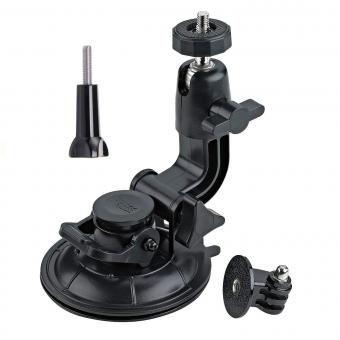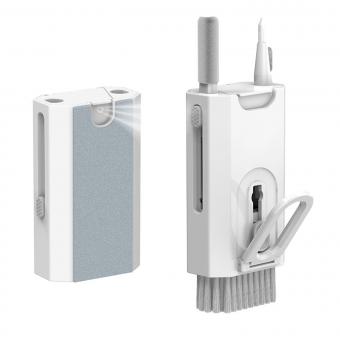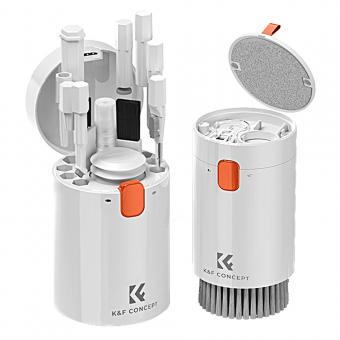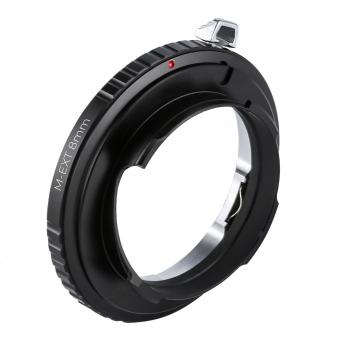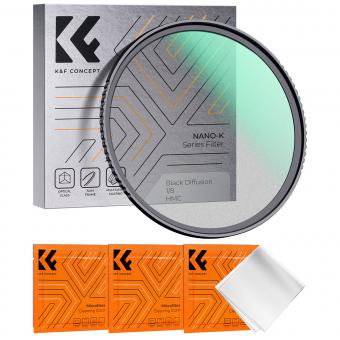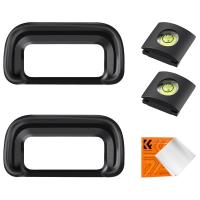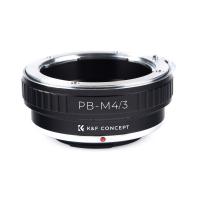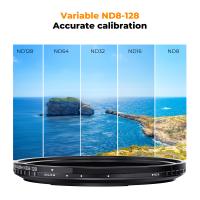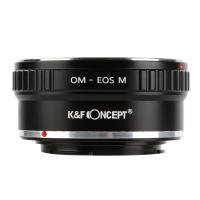How To Clean Old Microscope ?
To clean an old microscope, first, remove any dust or debris with a soft brush or compressed air. Then, use a lens cleaning solution and a microfiber cloth to gently clean the lenses and other parts of the microscope. Be careful not to scratch the lenses or damage any delicate parts. If there is stubborn dirt or grime, a mild soap solution can be used, but be sure to rinse thoroughly and dry completely before using the microscope again. It is also important to store the microscope in a clean, dry place to prevent further buildup of dust and debris.
1、 Disassembling the Microscope
How to clean old microscope:
Cleaning an old microscope can be a delicate process, but it is essential to ensure that it functions properly and provides accurate results. Here are some steps to follow when cleaning an old microscope:
1. Disassembling the Microscope: Before cleaning the microscope, it is essential to disassemble it carefully. This will allow you to clean each part of the microscope thoroughly. Make sure to keep track of all the parts and their positions to reassemble the microscope correctly.
2. Cleaning the Lenses: The lenses are the most critical part of the microscope, and they need to be cleaned carefully. Use a soft-bristled brush to remove any dust or debris from the lenses. Then, use a lens cleaning solution and a microfiber cloth to clean the lenses gently. Avoid using any harsh chemicals or abrasive materials that can damage the lenses.
3. Cleaning the Body: Use a soft cloth or a brush to remove any dust or debris from the body of the microscope. You can also use a mild soap solution to clean the body, but make sure to avoid getting any water or soap on the lenses.
4. Lubricating the Moving Parts: Lubricate the moving parts of the microscope with a small amount of oil or grease. This will ensure that the microscope moves smoothly and does not get stuck.
5. Reassembling the Microscope: Once you have cleaned all the parts of the microscope, reassemble it carefully. Make sure that all the parts are in their correct positions and that the microscope is functioning correctly.
It is essential to handle an old microscope with care as it can be fragile and easily damaged. Always follow the manufacturer's instructions and use the appropriate cleaning materials to ensure that the microscope is cleaned correctly.

2、 Cleaning the Lenses
Cleaning the lenses of an old microscope is a delicate process that requires patience and care. The lenses are the most important part of the microscope, and any damage to them can affect the quality of the images produced. Here are some steps to follow when cleaning the lenses of an old microscope:
1. Use a soft brush to remove any dust or debris from the lenses. Do not use compressed air, as this can damage the lenses.
2. Use a lens cleaning solution and a soft, lint-free cloth to clean the lenses. Apply the solution to the cloth, not directly to the lenses, and gently wipe the lenses in a circular motion.
3. If there are stubborn stains or smudges on the lenses, use a lens cleaning pen or a cotton swab dipped in lens cleaning solution to gently remove them.
4. Avoid using any harsh chemicals or abrasive materials on the lenses, as these can scratch or damage them.
5. Once the lenses are clean, use a lens cap or cover to protect them from dust and debris.
It is important to note that the latest point of view on cleaning microscope lenses is to avoid using any cleaning solutions that contain alcohol or ammonia, as these can damage the coatings on the lenses. Instead, use a solution specifically designed for cleaning microscope lenses, or use distilled water and a soft cloth. Additionally, it is recommended to clean the lenses only when necessary, as frequent cleaning can also damage the coatings on the lenses.

3、 Removing Rust and Corrosion
How to clean old microscope:
Cleaning an old microscope can be a delicate process, as you don't want to damage any of the delicate parts. Here are some steps to follow:
1. Start by removing any loose dust or debris from the microscope using a soft-bristled brush or compressed air.
2. Next, use a soft cloth or cotton swab dipped in a mild cleaning solution (such as isopropyl alcohol or distilled water) to gently clean the lenses and other parts of the microscope. Be sure to avoid getting any liquid inside the microscope body.
3. For tougher stains or grime, you can use a specialized microscope cleaning solution or lens cleaner. Follow the manufacturer's instructions carefully.
4. If there is rust or corrosion on any metal parts of the microscope, you can try removing it with a rust remover or a mixture of vinegar and baking soda. Be sure to rinse the area thoroughly with water and dry it completely afterwards.
5. Finally, store the microscope in a clean, dry place to prevent further damage or contamination.
It's important to note that if you're not confident in your ability to clean an old microscope, it's best to seek the help of a professional. Additionally, some older microscopes may contain hazardous materials such as lead or asbestos, so it's important to take appropriate safety precautions when handling them.

4、 Cleaning the Metal Parts
How to clean old microscope? Cleaning the metal parts is an essential step in maintaining an old microscope. The metal parts of a microscope can accumulate dirt, dust, and grime over time, which can affect the quality of the microscope's performance. Here are some steps to clean the metal parts of an old microscope:
1. Remove any loose dust or debris from the metal parts using a soft-bristled brush or a can of compressed air.
2. Use a mild detergent solution to clean the metal parts. Mix a few drops of dish soap with warm water and dip a soft cloth into the solution. Wring out the excess water and gently wipe the metal parts.
3. For stubborn stains or grime, use a metal polish or a specialized cleaning solution designed for microscope metal parts. Apply a small amount of the solution to a soft cloth and gently rub the metal parts.
4. After cleaning, use a dry cloth to wipe away any excess moisture and prevent rust or corrosion.
It is important to note that some old microscopes may have delicate or antique metal parts that require special care. In these cases, it may be best to consult a professional or a museum conservator for advice on how to clean and maintain the microscope. Additionally, it is important to follow any manufacturer's instructions or guidelines for cleaning and maintenance to ensure the longevity and performance of the microscope.




